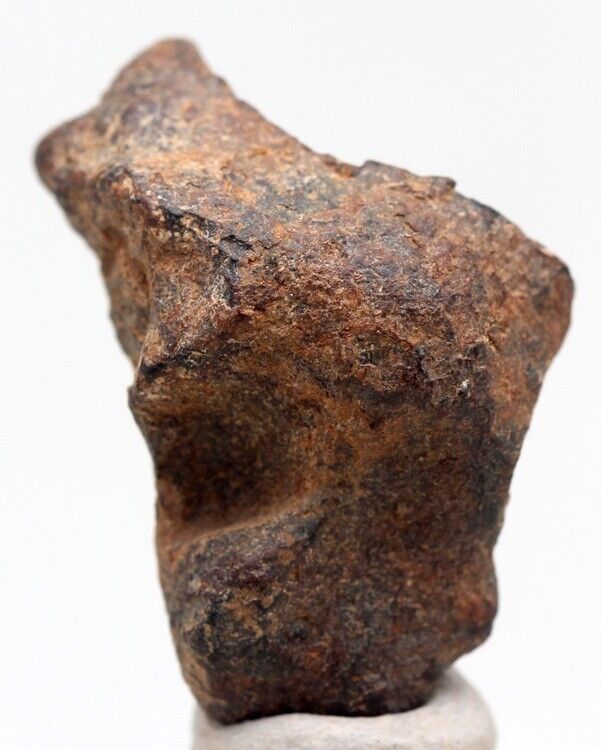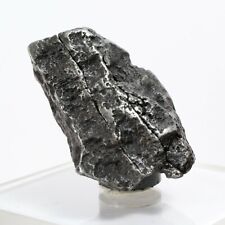AGOUDAL Iron Meteorite IMILCHIL Individual Specimen Natural Patina MOROCCO For Sale

When you click on links to various merchants on this site and make a purchase, this can result in this site earning a commission. Affiliate programs and affiliations include, but are not limited to, the eBay Partner Network.
AGOUDAL Iron Meteorite IMILCHIL Individual Specimen Natural Patina MOROCCO:
$43.99
This specimen weighs 10.76 grams. It measures 27 mm x 18 mm x 13 mm.I offer a shipping discount for customers who combine their payments for multiple purchases into one payment!The discount is regular shipping price for the first item and just 50 cents for each additional item!
To be sure you get your shipping discount just make sure all the items you want to purchase are in your cart.
sales you win are added to your cart automatically.
For any \"buy it now\" items or second chance offers, be sure to click the \"add to cart\" button, NOT the \"buy it now\" button.
Once all of your items are in your cart just pay for them from your cart and the combined shipping discount should be applied automatically.I offer a money back guarantee on every item I sell.
If you are not 100% happy with your purchase just send me a message to let me know
and I will buy back the item for your full purchase price.Hi there, I am selling this amazing Agoudal (Imilchil) Iron Meteorite mineral specimen! This meteorite was discovered in December of 2012. It is classified as a IIAB, iron meteorite. This still has its natural desert patina so it should be very stable and rust resistant. Meteorites are one of the RAREST materials on earth, more rare than diamonds!!!! This one fell in the Atlas Mountains of Morocco. Don\'t let this one pass you by. Anyway, I am offering it here, now, for you. If you have any questions, do not hesitate to ask me. Have fun offerding, thanks so much for visiting my sale and have a great day!
If you purchase from me you should know that the authenticity of this meteorite is guaranteed!
I am a member of the IMCA or the International Meteorite Collector\'s Association. This is an organization that is a check and balance of those who collect, trade and sell meteorites. You can only join this organization by having the utmost integrity. You must to have two references from existing members to get in and a good reputation. Members of this organization maintain a high standard by monitoring each others\' activities for accuracy and honesty. It is every IMCA member\'s responsibility and pleasure to offer help and assistance to fellow members in order to ensure specimens are genuine. It is not wise to purchase meteorites on or other sources from those who are not IMCA members. This is a very tight-knit community made up of meteorite hunters, dealers, collectors, and scientists who look out for each other to make sure that the meteorites offered to the public are authentic and genuine. I encourage you to visit the IMCA website and get more information on what being a member means, and how your purchases from its members are guaranteed.
IMCA Member #7446
Below is some information about this meteorite:IIAB meteoritesFrom Wikipedia, the free encyclopediaIIAB— Group —SikhoteAlinMeteorite.jpgThe Sikhote-Alin is the largest IIAB meteorite.Compositional type IronStructural classification Hexahedrite to OctahedriteSubgroups IIA IIBParent body IIAB-IIG[1]Composition Meteoric iron (Kamacite + Taenite)Total known specimens 117 + 1 anomalousIIAB meteorites are a group of iron meteorites. Their structural classification ranges from hexahedrites to octahedrites.[2] IIABs have the lowest concentration of nickel of all iron meteorite groups.[3] All iron meteorites are derived from the metallic planetary cores of their respective parent bodies, but in the case of the IIABs the metallic magma separated to form not only this meteorite group but also the IIG group.[1]
Contents [hide]1 Naming2 Description3 Parent body4 Notable specimens5 ReferencesNaming[edit]Iron meteorite groups are designated with a Roman numeral and one or two letters. Classification is based on diagrams in which the nickel content of meteoric iron is plotted against certain trace elements (e.g. gallium, germanium and iridium). Clusters in these diagrams are assigned a row (Roman numeral) and a letter in alphabetical order. The first two cluster of the second row, IIA and IIB, were merged when additional measurements connected the two clusters into one, the IIAB group.[4]
Description[edit]
The low concentration of nickel in the IIAB group leads to most of the meteoric iron becoming kamacite.All iron meteorites are made of a native metal called meteoric iron. The concentration of nickel has an influence on the mineralogy of the meteoric iron. During cooling kamacite is exsolved from taenite. The lower the concentration of nickel, the more kamacite is formed. IIABs have some of the lowest nickel concentrations of all iron meteorites. They are in the range of 5.3 to 6.6%. For this reason they mostly consist of kamacite with minor amounts of taenite. The two groups that were merged into the IIAB group had different nickel concentrations and therefore different structural classifications. The IIA group has lower nickel concentrations and forms hexahedrites, the IIB has higher nickel concentrations and forms octahedrites.[5]
Parent body[edit]
Phase diagram showing the suspected cooling path of the parent body. While cooling the parent body reached the IIAB field. It then followed the field to the eutectic point where the remaining melt cavities formed the IIG meteorites.[1]The IIAB meteorites formed the metallic core of their parent body before it was destroyed, and some of the fragments reached earth as iron meteorites.
The planetary core of the IIABs was rich in sulfur and phosphorus. This special chemical composition caused the magma to split into two separate liquids while cooling. The concentration of sulfur is estimated to have been about 5%. For this reason the metallic magma reached the liquidus curve (a point where solids coexist with a liquid) of the iron + liquid field. This led to the crystallization of the IIAB meteorites. The remaining liquid was trapped in cavities of the IIABs and crystallized once the temperature reached the eutectic point. At this temperature the remaining magma crystallized schreibersite and iron, thereby forming the IIG meteorites.[1]
Notable specimens[edit]There are currently 117 meteorites classified as IIAB and 1 as IIAB-anomalous. Of these only three were observed falls.
Seven IIAB meteorites weigh more than 1000 kg.[6] The Sikhote-Alin meteorite is the heaviest of these and was an observed fall,[7] while the Old Woman meteorite is, at 38 × 34 × 30 inches (970 × 860 × 760 mm) and 6,070 pounds (2,750 kg) originally, the largest meteorite found in California and the second largest found in the United States.[8]

Related Items:
AGOUDAL Iron Meteorite IMILCHIL Individual Specimen Natural Patina MOROCCO
$55.99
55.78 Gram Agoudal Meteorite Iron Crystal Imilchil IIAB Morocco Hexahedrite B28
$179.98
AGOUDAL Iron Meteorite IMILCHIL Individual Specimen Natural Patina MOROCCO
$43.99



